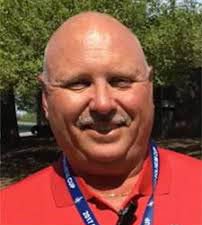 After four years of renovation and construction projects and prepping for a Solheim Cup that captured the collective heart of an entire state, you would think a guy could catch a break.
After four years of renovation and construction projects and prepping for a Solheim Cup that captured the collective heart of an entire state, you would think a guy could catch a break.
More than four decades into a career of managing greens, tees and fairways, Rick Tegtmeier, CGCS MG at Des Moines Golf and Country Club, called 2018 one of the most challenging growing seasons he has faced. The experience, Tegtmeier said, illustrates the importance of communicating with members and other stakeholders.
 "Nothing was ever normal. It's been a year of extremes," Tegtmeier said. "We've been constantly adapting to whatever the conditions are.
"Nothing was ever normal. It's been a year of extremes," Tegtmeier said. "We've been constantly adapting to whatever the conditions are.
"Sometimes, a superintendent can get into trouble by not conveying what's happening with the weather. We've put a lot of posts on social media to show people what we're dealing with."
It was so dry so early into the winter season as well, that Tegtmeier had to crank up the irrigation system in December to get some water onto the turf. By March, temperatures in Des Moines reached the mid-60s according to the National Weather Service, and Tegtmeier was rushing to open the course. Winter returned in April, with average high and low temperatures nearly 10 degrees below normal.
Then things really got rough.
In early May, temps in Des Moines were abnormally high, reaching into the low 80s. Two weeks later, it was in the mid-50s. The topsy-turvy conditions culminated on May 27 when the mercury reached 102 degrees. Tegtmeier recorded record rainfall for June at DMGCC, including 10 inches in one 24-hour period.
"After adding nine miles of drainage during four years of construction," Tegtmeier said. "And it's still not enough."
Cast into August-like conditions before Memorial Day weekend, the bentgrass at DMGCC never had a chance to develop long strong roots throughout the early part of the growing season.
It was new territory for Tegtmeier, who has been in the golf business for 46 years and oversaw four years of restorations in the lead-up to the 2017 Solheim Cup before eventually being named, along with Jorge Croda of Southern Oaks GC in Texas, the recipient of the 2017 TurfNet Superintendent of the Year Award presented by Syngenta.
"It was so abrupt and so sudden, it was brutal," Tegtmeier said of the weather changes.
"The roots were really compromised."
Each year, Tegtmeier budgets for one wetting agent application in June, July and August. This year, he made his first application, albeit an unplanned one, in May. He also was getting as much air as possible into the rootzone.

"We spent the entire month of May dealing with localized dry spot. We made an additional wetting agent application, and we were needle tining a lot," Tegtmeier said.
"We were constantly sending aerifiers out. There was a two-week stretch where one of them was running somewhere every day. We were hand-watering everywhere, then the rainy period hit. That's where guys lost grassy, when it was rainy and hot. There's always a little bit of concern about mechanical damage and lifting turf when it's stressed and you run a solid tine over it. You have to water to get some depth.
Through the heart of the summer, DMGCC faced nearly two months of conditions more suited for the Sahara than Iowa.
"We've had seven weeks of no rain," he said. "The water here is very sodic, so we have built up salinity in the top inch and we have to flush that."
Throughout a career that started learning at the knee of Bill Byers, who was at DMGCC for 49 years, Tegtmeier writes his own fungicide programs, and he has been put to the test this year, making changes to a program that goes out every 14 days.
"At times, I flip-flopped chemicals based on what I needed," Tegtmeier said. "Everything we do is based on sound agronomic principles.
"I don't do anything based on what anyone else does. With 36 holes, you only have so much of a window to spray. I spray every two week, and I don't stretch that window. I have no idea what the guy down the street or across town does.I relied on experience more this year than I ever have."
That includes communicating with members about what is happening on the golf course and why it might be necessary to spend a little more to keep the bentgrass happy.
"Anything is better than losing grass," he said. "Now, we lost a little Poa on a couple holes, and I communicated to the GM and the green committee that this was an opportunity to seed in some new bentgrass, and that's what we did, and we're all bentgrass now. Communication is important. If you can tell them how you are going to fix it rather than give them excuses of why things didn't get done, I think they are happier that way."


